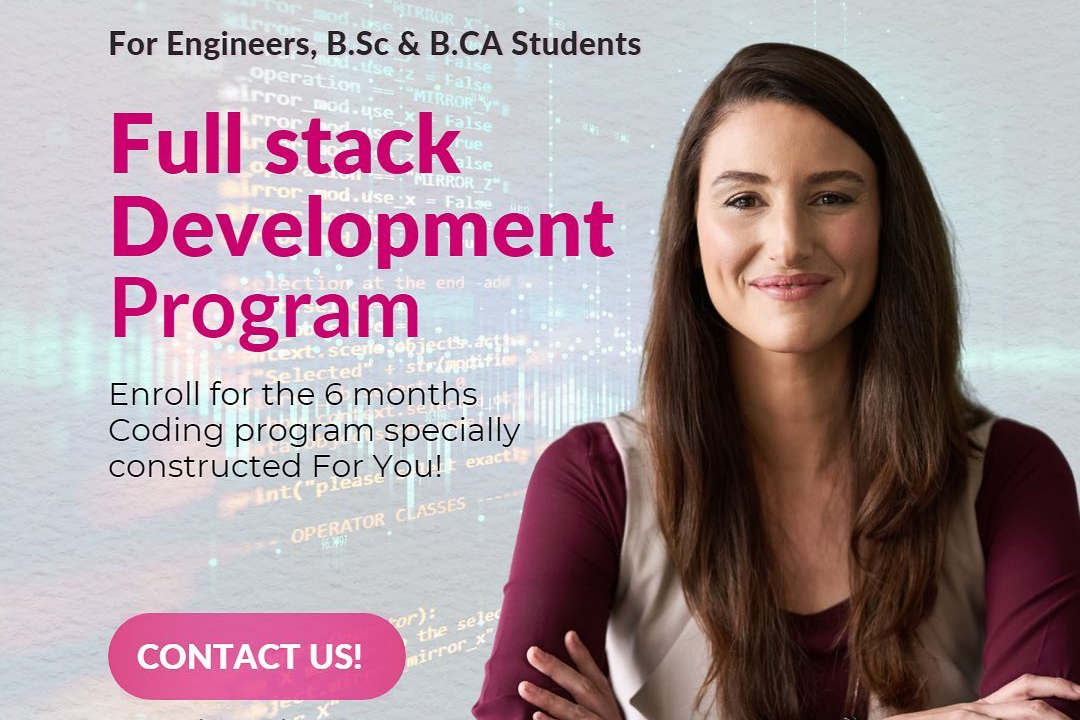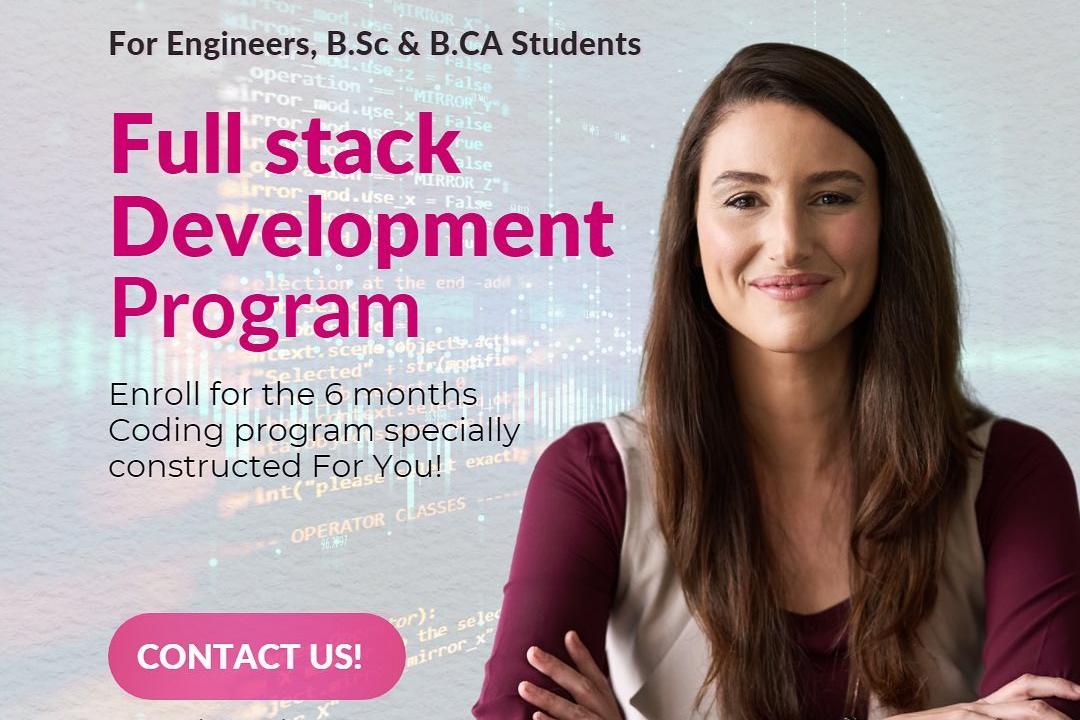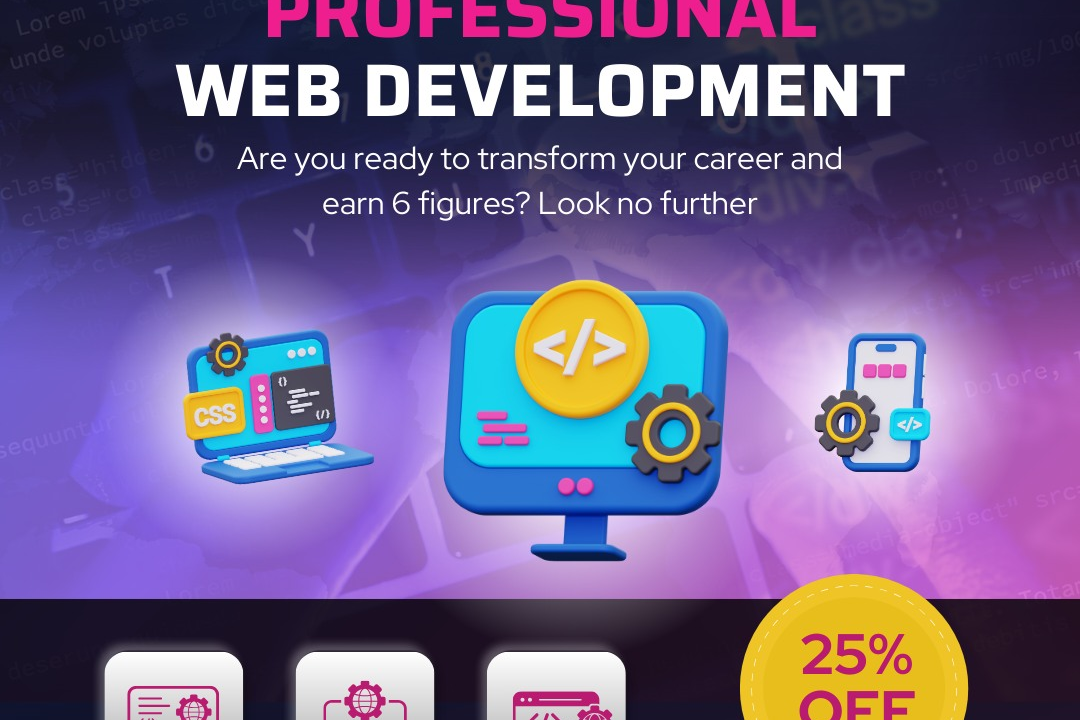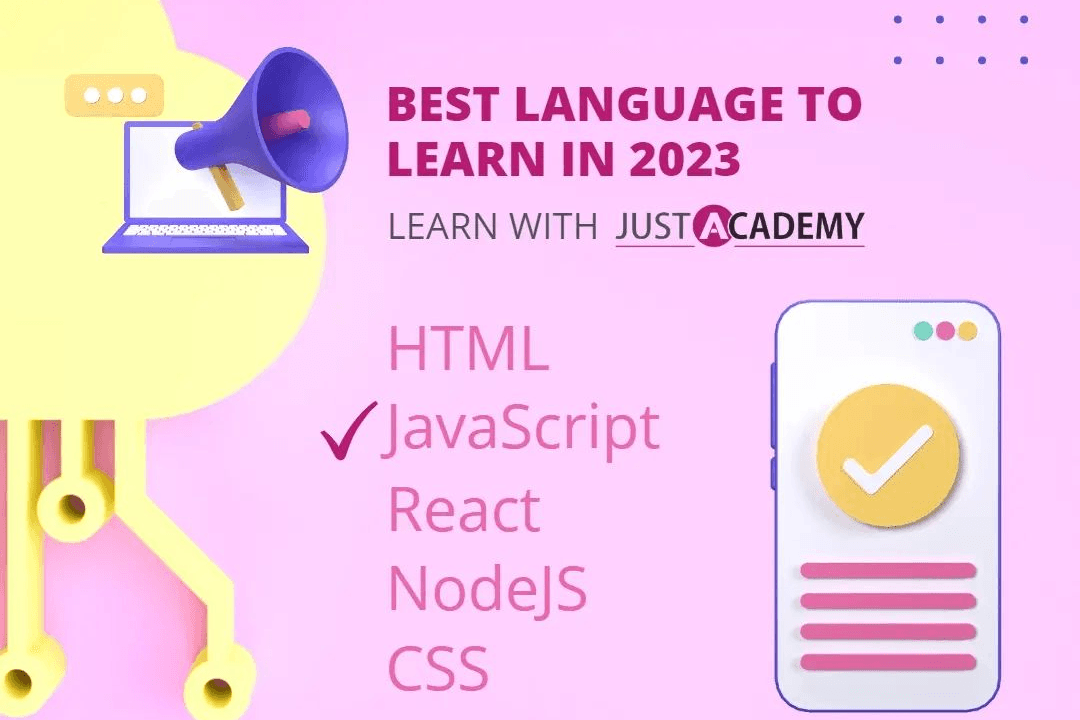Laravel Query Interview Question
Essential Laravel Query Interview Questions for Aspiring Developers
Laravel Query Interview Question
Laravel query interview questions are essential for evaluating a developer's proficiency in using the Laravel framework's powerful query builder and Eloquent ORM. These questions typically assess a candidate's understanding of how to efficiently interact with databases, perform complex queries, and implement CRUD operations within a Laravel application. Understanding these fundamental concepts is crucial, as they directly impact the performance and scalability of an application. Mastering query operations in Laravel not only enhances a developer’s coding efficiency but also ensures that they can build robust applications that effectively manage data, making these interview questions a key aspect of the hiring process for any Laravel-focused role.
To Download Our Brochure: https://www.justacademy.co/download-brochure-for-free
Message us for more information: +91 9987184296
1 - What is Eloquent ORM in Laravel?
Eloquent ORM is Laravel's built in Object Relational Mapping (ORM) system, which allows developers to interact with the database using an object oriented syntax. It enables the management of database records as PHP objects and includes features like relationships, scopes, and accessors.
2) How do you retrieve all records from a table using Eloquent?
To retrieve all records from a table using Eloquent, you can use the `all()` method on the model. For example, `User::all();` will fetch all records from the `users` table.
3) How can you perform a simple query to find a user by their ID?
You can find a user by their ID using the `find()` method, such as `User::find($id);`, which returns the user record associated with that ID.
4) What is the purpose of `where` clauses in Laravel queries?
`where` clauses are used to filter results based on specific conditions. For example, `User::where('status', ‘active’) >get();` retrieves all active users from the table.
5) How do you perform a join query in Laravel?
To perform a join query, you can utilize the `join()` method, for example, `DB::table('orders') >join('users', ‘orders.user_id’, ‘=’, ‘users.id’) >select('orders.*', ‘users.name’) >get();` which retrieves records from both `orders` and `users` tables.
6) What are query scopes in Laravel?
Query scopes are used to encapsulate a set of query constraints in a model, enabling developers to reuse them easily. For example, defining a scope in a model like `public function scopeActive($query) { return $query >where('status', ‘active’); }` allows calling it with `User::active() >get();`.
7) How can you update a record in Laravel?
To update a record, retrieve the model instance first, then use the `update()` method. For instance, `$user = User::find($id); $user >update(['name' => ‘New Name’]);`.
8) Explain the difference between `pluck()` and `select()`.
`pluck()` retrieves a single column value from the results, simplifying the output into an array, for example, `User::pluck('name');`. In contrast, `select()` allows you to specify multiple columns to retrieve in a collection of records.
9) How do you paginate results in Laravel?
You can paginate results using the `paginate()` method on a query, like `User::paginate(10);`, which retrieves 10 users per page and provides pagination controls.
10) What is the purpose of `firstOrCreate()` method?
The `firstOrCreate()` method attempts to find the first record matching the given attributes; if it doesn't exist, it creates a new one. For instance, `User::firstOrCreate(['email' => ‘test@example.com’], ['name' => ‘Test User’]);` will either return the existing user or create one.
11 - How do you delete a record in Laravel?
To delete a record, use the `delete()` method after retrieving the model instance, for example, `$user = User::find($id); $user >delete();` or directly call `User::destroy($id);`.
12) What are relationships in Laravel?
Relationships define how models interact with each other. Laravel supports various relationships, including one to one, one to many, and many to many, which can be defined using methods like `hasMany()`, `belongsTo()`, etc.
13) Can you explain the `with()` method in Eloquent?
The `with()` method is used to eager load relationships, allowing you to load related models alongside the main model in a single query. For example, `User::with('posts') >get();` retrieves users and their related posts efficiently.
14) How do you execute a raw SQL query in Laravel?
You can execute raw SQL queries using the `DB::select()` method. For example, `DB::select('SELECT * FROM users WHERE active = ?', [1]);` allows you to run raw SQL with bindings for security.
15) What is the purpose of `distinct()` in queries?
The `distinct()` method is used to return only unique results from a query, eliminating duplicate entries. For instance, `User::select('email') >distinct() >get();` returns a collection of unique email addresses from users.
Sure, here are additional points regarding Eloquent ORM in Laravel:
16) What is a Model in Laravel?
A Model in Laravel represents a database table and is used to interact with that table. Each model class corresponds to a specific table, allowing you to perform operations like creating, reading, updating, and deleting records.
17) How do you define a one to many relationship in Eloquent?
To define a one to many relationship, you can create a method in the parent model that returns the relationship. For example, in a `User` model, you might define `public function posts() { return $this >hasMany(Post::class); }`. This indicates that one user can have multiple posts.
18) What is the use of `belongsTo()` in Eloquent?
The `belongsTo()` method is used to define an inverse one to many relationship. For instance, in a `Post` model, you would define `public function user() { return $this >belongsTo(User::class); }`, indicating that each post belongs to a single user.
19) What does the `save()` method do in Eloquent?
The `save()` method is used to insert a new record into the database or update an existing one. For example, you can create a new user by instantiating the model, setting the attributes, and calling `$user >save();`.
20) How can you enforce data validation in a model?
You can enforce data validation in a model by utilizing Laravel's built in validation rules in conjunction with event listeners such as `creating` or `updating`. This ensures that only valid data is saved to the database.
21 - What are Accessors and Mutators in Eloquent?
Accessors are custom attributes that modify how a model's attributes are retrieved, while Mutators modify how values are set on a model's attributes. For example, an accessor could format a user's name, while a mutator could ensure that email addresses are stored in lowercase.
22) How do you use the `findOrFail()` method?
The `findOrFail()` method retrieves a record by its ID, and if no record is found, it throws a `ModelNotFoundException`. This is useful for error handling, as it allows you to catch the exception if a record doesn't exist, e.g., `$user = User::findOrFail($id);`.
23) What role does the `timestamps` feature play in Eloquent?
The `timestamps` feature automatically manages the `created_at` and `updated_at` fields in the database. By default, Eloquent adds these fields to your migrations, and they will automatically be updated when you create or update records.
24) How can you use transactions in Laravel?
To ensure data integrity, you can use database transactions with the `DB::transaction()` method. This allows you to execute multiple queries within a transaction, which are either all committed or rolled back in case of an error.
25) What is soft deleting in Eloquent?
Soft deleting allows you to preserve records in the database while marking them as deleted using a `deleted_at` timestamp. To enable soft deletes, you can use the `SoftDeletes` trait in your model, which provides methods like `softDelete()` and `restore()`.
26) How do you use the `count()` method in Eloquent?
The `count()` method is used to get the number of records that match a given query. For example, to count all active users, you can use `User::where('status', ‘active’) >count();`.
27) What is the purpose of the `merge()` method in Eloquent collections?
The `merge()` method is used to combine two collections into a single collection. This is useful when you want to aggregate items from different sources into one unified collection.
28) How can you retrieve the last record from a table using Eloquent?
To retrieve the last record from a table, you can use the `latest()` method followed by `first()`. For example, `User::latest() >first();` fetches the most recently created user.
29) What is the purpose of `chunk()` method in Eloquent?
The `chunk()` method allows you to process large datasets by retrieving records in smaller batches. For example, `User::chunk(200, function ($users) { // process users });` retrieves 200 users at a time, preventing memory exhaustion.
30) How can you use eager loading to optimize queries?
Eager loading is used to reduce the number of queries executed when retrieving related models. By using `with()`, for example, `User::with('posts') >get();`, you can load users and their posts with a single query instead of executing separate queries for each user’s posts.
These points cover various aspects and functionalities of Eloquent ORM in Laravel, enhancing your understanding and application of this powerful tool in web development with Laravel.
Course Overview
The “Laravel Query Interview Questions” course is designed to equip learners with a comprehensive understanding of querying within the Laravel framework, focusing on key concepts and practical applications. Participants will explore essential topics such as Eloquent ORM, query building, relationships, data retrieval, and performance optimization techniques. Through a series of real-time projects and hands-on exercises, they will engage with commonly asked interview questions to enhance their problem-solving skills and build confidence for technical interviews. By the end of the course, students will be well-prepared to demonstrate their Laravel querying expertise effectively to potential employers.
Course Description
The “Laravel Query Interview Questions” course provides a comprehensive exploration of querying techniques within the Laravel framework, focusing on Eloquent ORM, query builders, and advanced data retrieval methods. Learners will engage in practical exercises, tackling real-world projects and commonly asked interview questions. This hands-on approach ensures participants not only grasp theoretical concepts but also develop the necessary skills to perform effectively in technical interviews. By the end of the course, students will be equipped with the knowledge and confidence to navigate Laravel's querying capabilities and impress potential employers with their expertise.
Key Features
1 - Comprehensive Tool Coverage: Provides hands-on training with a range of industry-standard testing tools, including Selenium, JIRA, LoadRunner, and TestRail.
2) Practical Exercises: Features real-world exercises and case studies to apply tools in various testing scenarios.
3) Interactive Learning: Includes interactive sessions with industry experts for personalized feedback and guidance.
4) Detailed Tutorials: Offers extensive tutorials and documentation on tool functionalities and best practices.
5) Advanced Techniques: Covers both fundamental and advanced techniques for using testing tools effectively.
6) Data Visualization: Integrates tools for visualizing test metrics and results, enhancing data interpretation and decision-making.
7) Tool Integration: Teaches how to integrate testing tools into the software development lifecycle for streamlined workflows.
8) Project-Based Learning: Focuses on project-based learning to build practical skills and create a portfolio of completed tasks.
9) Career Support: Provides resources and support for applying learned skills to real-world job scenarios, including resume building and interview preparation.
10) Up-to-Date Content: Ensures that course materials reflect the latest industry standards and tool updates.
Benefits of taking our course
Functional Tools
1 - Laravel Framework
The primary tool used in the Laravel Query Interview Questions course is the Laravel framework itself. Renowned for its elegant syntax and powerful features, Laravel streamlines complex tasks commonly associated with web development. Students learn how to effectively utilize built in functionality for query building and retrieval, enhancing their coding efficiency. The framework also supports modular application development, allowing for easy maintenance and upgrades, which is essential for any scalable application. Understanding Laravel equips students with practical skills necessary for building robust web applications.
2) PHP Coding Language
As Laravel is built on PHP, students will extensively use this server side scripting language throughout the course. PHP is critical for server side logic, and mastering this language enables students to manipulate database queries seamlessly. The course emphasizes fundamental and advanced PHP techniques to ensure that students can optimize their use of Laravel features. A strong foundation in PHP is essential for realizing the full potential of Laravel's capabilities, particularly in executing complex queries and handling data efficiently.
3) Composer
Composer is a dependency management tool used in PHP projects, including Laravel. During the course, students learn how to utilize Composer to manage libraries and packages essential for their applications. Understanding how to install, update, and configure third party packages ensures that students can keep their projects modular and maintainable. Additionally, the course teaches how to create and manage project dependencies effectively, which is crucial for large scale project development. This knowledge is vital for students to become proficient developers who can navigate real world software projects.
4) MySQL Database
MySQL serves as the foundational database management system utilized in the course. Students learn to configure and connect MySQL databases to their Laravel applications, as well as how to perform CRUD (Create, Read, Update, Delete) operations through Eloquent ORM (Object Relational Mapping). The course gives a thorough understanding of how to execute complex queries, implement relationships between tables, and optimize database performance. This proficiency is essential for any developer working with data driven applications, ensuring they can effectively handle various database related tasks.
5) Postman
Postman is an API development tool, critical for testing and interacting with APIs crafted using Laravel. Students are taught how to use Postman to send requests to their Laravel applications and receive responses. This tool allows learners to verify the behavior of their queries and the success of their implementations in a practical manner. Understanding API interaction is crucial for modern web applications, and knowledge in Postman helps students test their applications thoroughly, ensuring they are reliable and functional before deployment.
6) Version Control with Git
Git is an essential version control system that students will use throughout the course for managing their code. The course emphasizes the importance of version control in collaborative projects, as it enables developers to track changes, revert to previous versions, and work on separate features without conflicts. Students learn how to set up Git repositories, push their code to platforms like GitHub, and collaborate with peers on shared projects. This knowledge prepares students for real world development environments, where version control is a standard practice essential for team based workflows.
Certainly! Here are additional components and tools that play a significant role in the Laravel Query Interview Questions course offered by JustAcademy:
7) Blade Templating Engine
Blade is Laravel's powerful templating engine that allows developers to create dynamic views easily. In this course, students learn how to use Blade to integrate PHP logic directly into their HTML with clean and reusable templates. This feature enhances the maintainability of web applications and separates the presentation layer from the business logic. Mastery of Blade enables students to deliver responsive and user friendly interfaces in their applications, making it a vital skill in web development.
8) Artisan Command Line Interface
Artisan is Laravel's built in command line interface that streamlines various development tasks. Students in the course are introduced to common Artisan commands used for creating controllers, models, and migrations, among other tasks. Learning how to leverage Artisan can significantly enhance productivity and simplify complex workflows. Understanding Artisan also helps students grasp the importance of command line tools in modern software development.
9) Eloquent ORM
Eloquent is Laravel's powerful Object Relational Mapping (ORM) system that simplifies database interactions. The course provides a deep dive into Eloquent's capabilities, teaching students how to define models, relationships, and database queries using a fluent syntax. Students will learn how to work with complex queries, eager loading, and mutators, which helps enhance data manipulation and retrieval. Mastery of Eloquent is crucial for any developer aiming to work with relational databases efficiently.
10) Middleware
Middleware is an integral part of Laravel's HTTP request processing. During the course, students explore how to create and use middleware to filter requests and handle cross cutting concerns such as authentication and logging. Understanding middleware allows students to implement robust security measures and improve the maintainability of their applications by decoupling business logic from request handling.
11 - Laravel Mix
Laravel Mix is a powerful tool for asset compilation, enabling developers to manage and customize their JavaScript and CSS workflows. In this course, students learn how to use Laravel Mix for tasks like minification, versioning, and compiling front end assets with tools like Webpack. Knowledge of Laravel Mix is essential for ensuring that applications are optimized for performance in production environments.
12) Unit Testing with PHPUnit
Testing is a crucial practice in software development, and Laravel integrates seamlessly with PHPUnit for unit testing. The course teaches students how to write and run tests for their applications to ensure reliability and functionality. They learn about test driven development (TDD) methodologies, enabling them to create more robust applications. Understanding how to implement tests is vital for ensuring software quality and reducing the likelihood of bugs in production.
13) RESTful API Development
The course covers principles of RESTful API design, enabling students to build and consume APIs effectively. They learn how to implement resourceful routing, handle JSON responses, and manage API authentication methods like Laravel Passport or Sanctum. Familiarity with RESTful concepts is essential for modern web applications, especially those requiring interaction between client and server in a seamless manner.
14) Database Migrations and Seeders
Students in the course learn the importance of database migrations and seeders for version control over database schemas and data. Migrations allow them to create and modify database structures in a structured way, while seeders enable them to populate the database with initial data for development and testing purposes. This skill ensures that projects are easily reproducible and fosters a collaborative environment among development teams.
15) Handling Authentication and Authorization
The course includes comprehensive training on implementing authentication and authorization features in Laravel applications. Students learn about Laravel's built in authentication system, how to create login and registration functionalities, and how to restrict access to certain parts of the application based on user roles and permissions. This knowledge is crucial for building secure applications that protect sensitive user data.
16) Deployment Strategies
In addition to development skills, the course provides insights into application deployment strategies. Students learn best practices for deploying Laravel applications to various hosting environments, including shared hosting, VPS, and cloud platforms like AWS. Topics include server configuration, environment variables, and optimizing application performance in production. Understanding how to deploy applications is essential for transitioning from development to real world usage.
These additional components ensure that students are well equipped with the comprehensive skills necessary for success in the field of web development, particularly using Laravel. Each aspect enhances their ability to tackle real world projects and prepares them for various challenges they may face in their careers.
Browse our course links : https://www.justacademy.co/all-courses
To Join our FREE DEMO Session:
This information is sourced from JustAcademy
Contact Info:
Roshan Chaturvedi
Message us on Whatsapp: +91 9987184296
Email id: info@justacademy.co
Laravel ORM Interview Questions












